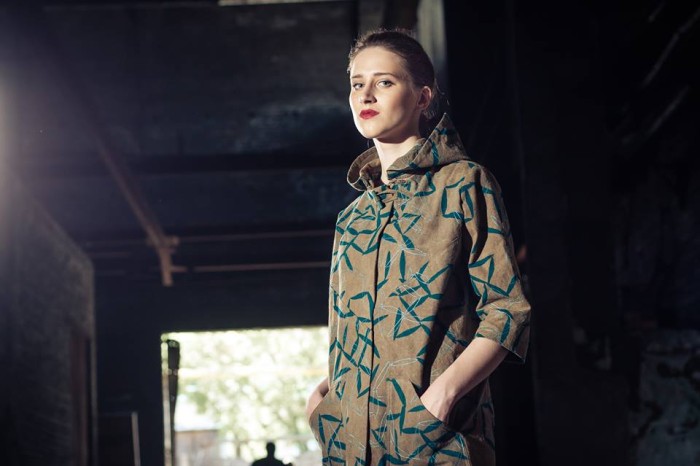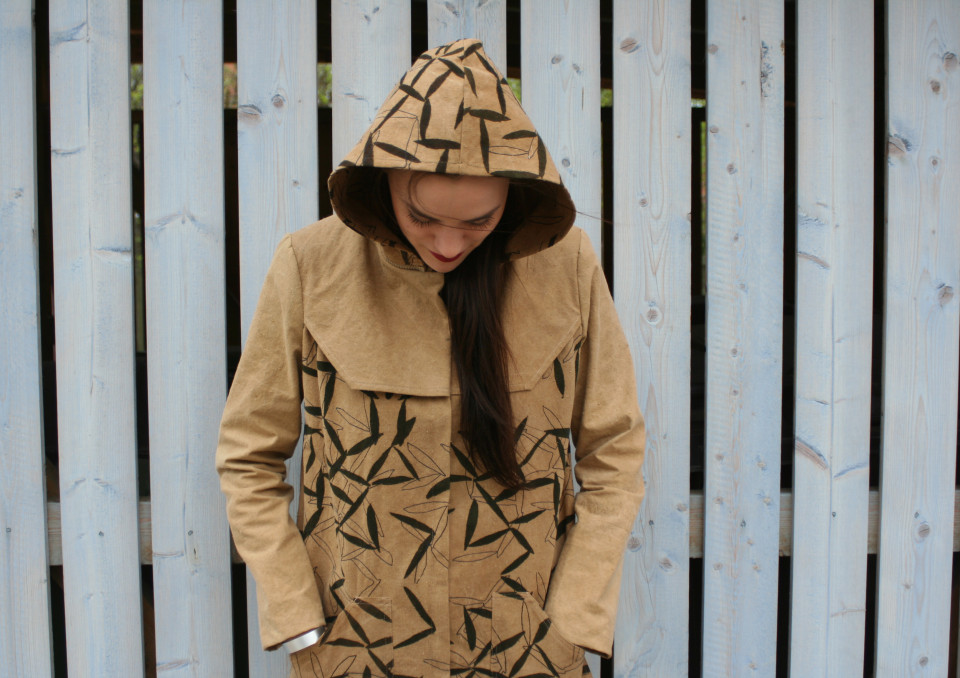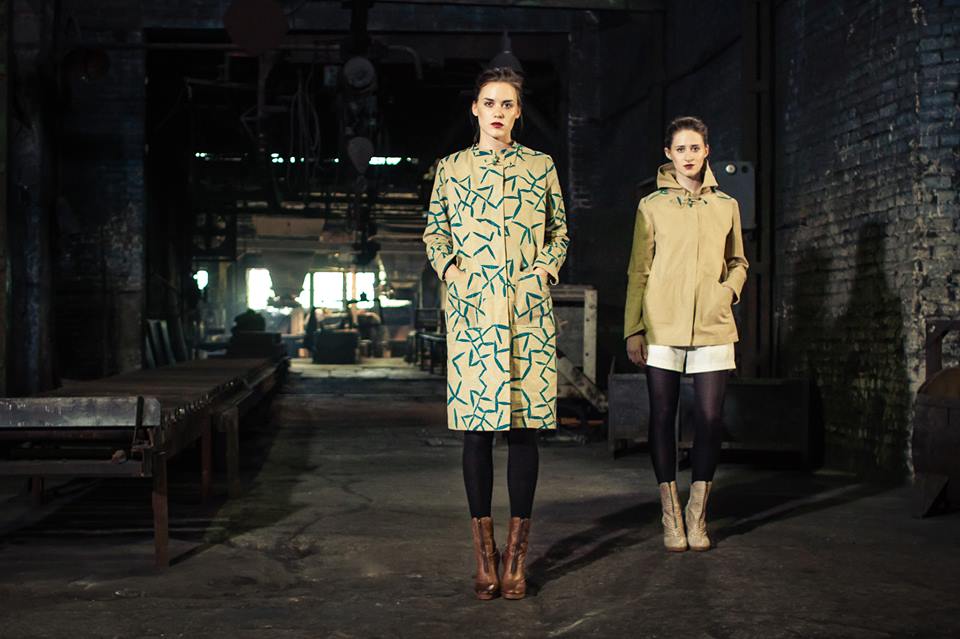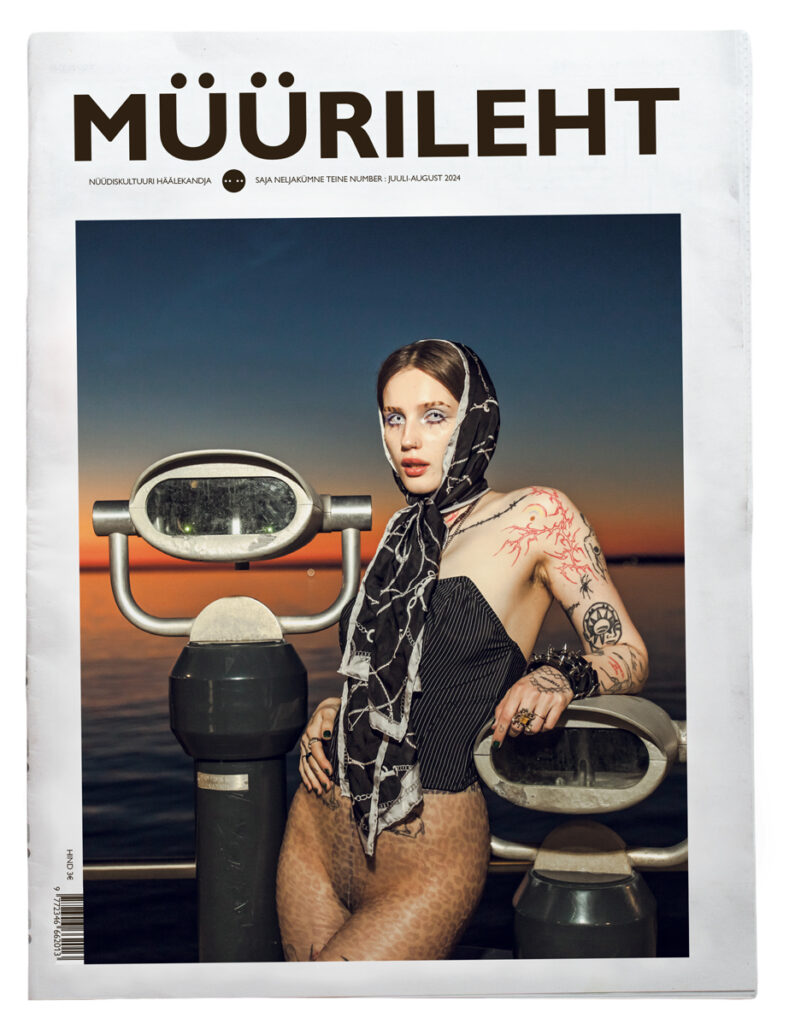New Estonian Design: Kairi Lentsius
Lugemisaeg 6 minNew and exciting people keep emerging from the Estonian design scene. This is how Kairi Lentsius, who’s also among one of the forementioned, sees the current situation. Kairi is doing her master’s at the Swedish School of Textiles and has already finished her studies of textile and history in Estonia. By exploiting the strong sides of her specialities and working on the weak ones, she has the ability to see towards where to move and what are the possibilities of the unknown finished results.

When it comes to work, one of your most exciting projects is an upcycling project “Tent”. What is its background and your future plans with it?
“Tent” grew out of my bachelor’s project, made in co-operation with the Estonian National Defence College already two years ago. One of the objectives of the project was to appreciate and focus on the materials, in this case, old military tents and their character. To make the fabric of the tent, which has seen the sun, rain and wind, work as a positive aspect rather than a defect. On the other hand, I started wondering about the meanings and connections of the material. Even though the coats have a rather unisex cut, I also raised a question about the origin of the fabric, its function and future use. Placing an item from the male world onto women, changing the material with prints and embroidery. The interesting thing about this project is that every coat offers excitement and is a challenge because they all differ from one another. The uniqueness of the source material calls for a very individual approach and development. Therefore, I plan to carry on until there is still something to work with.
At the moment you are enrolled in a master’s programme at the Swedish School of Textiles. Where did that decision come from?
My master’s project is largely based on laser cutting. It is mostly used as a replacement to textile printing in current fashion. My study objective is that the form and function of the clothing would be directly determined by laser cutting. Basically, it is a technological challenge to see new opportunities in clothing construction. The research question which I use to contribute to my field is important too.
You have also studied textile at Tartu Art College. What differences in approach to design can you perceive between the Estonian and Swedish students?
One thing that stands out is that Estonian students are a lot more practical. The important things are the finished results, user-friendliness and the marketing side. For some reason, Swedish students have the idea that these projects are not meant to go on the market, it is about the concept. No one mentions the wearer. In some sense, it is liberating and offers opportunities to implement different ideas. And all this can actually be adjusted for production later on, it does not work the other way round.

Why did you decide to study fashion design?
In reality, I was between interior design and textile for a long time. I did not fully understand what was going to happen when I went to study fashion design, either. The understanding came only some time later. Of course, it could have been caused by the differences between the study programmes in Estonia and Sweden.
What are these differences mainly about?
Swedish students begin studying methodology during their bachelor and their projects are put together in a way that they need to think independently what and how they want to do. They must argue why their project is needed, what it will bring to their field or how it will develop the technology. While being here, I realised how conveniently things are arranged in Estonia. For example, on a carpet weaving course, everyone is weaving the carpet and no one even questions that they could be doing something else. This is, of course, a very black and white example, but in principle, this is how it is. Therefore, formulating a study objective and arguing why you are doing something is a much greater challenge. It emphasizes independent thinking and further developing of it.
Do you think it will change in Estonia as well or is it a path too well trodden?
I feel that it is a path too well trodden.
Can the newcomers, however, change it somehow?
Of course they can, but I have not seen any encouragement that would help to bring about other approaches.
How do you perceive the current situation in contemporary Estonian fashion design?
I think it is great that new exciting projects and people have started to appear lately. It is fascinating to watch my class, schoolmates and Estonian Academy of Arts graduates starting their own projects and fascinating to see in which direction they will move. Fresh people are always the most interesting because they have not taken the well-trodden path. Doing something that is already working well somewhere else should not be the purpose – I truly believe you will not get very far like this.

What is the relationship between fashion and art?
Right now, I am discovering the creative side of fashion more and more. When developing an idea, it does not matter how you can move in the clothing item or how skin-friendly the material is. It is possible to adjust things later on. I think it is not possible to discover new things if you do not do any creative work. The study objective should be evolved in a way that you do not precisely know where you will end up. It is difficult to accomplish anything new if the result is known beforehand.
Where do you see yourself in the future — in Estonia or in some other country?
I have given this a lot of thought but maybe I would still prefer to do my things in Estonia. I think it is a very good place where to do clothing design – we also have production opportunities and being away from Estonia makes one realise that everything is actually here. Why not produce on spot then and export it. Everything’s possible.
See more of Kairi’s work here.
